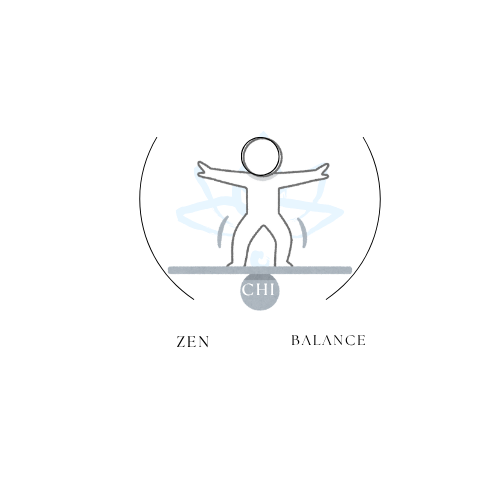
Mindfulness vs Multitasking Reclaim Focus and Ease
Share
Updated on: 2025-10-25
Mindfulness Table of Contents
- Mindfulness Table of Contents
- Mindfulness Overview: Value, Purpose, and a Gentle Start
- Present-Moment Awareness and Nonjudgmental Awareness in Mindfulness
- Mindfulness Facts: Did You Know?
- Mindfulness Comparison: Pros and Cons
- How to Practice Mindfulness: A Gentle 5-Step Start
- Mindfulness Exercises for Anxiety: Simple Options
- Mindfulness Buyer’s Checklist for Supportive Tools
- Final Thoughts and Advice on Mindfulness
- Mindfulness Questions and Answers (FAQ)
Mindfulness Overview: Value, Purpose, and a Gentle Start
Mindfulness is a simple, respectful way to pay attention to what is happening right now. In practice, mindfulness often blends present-moment awareness with nonjudgmental awareness, inviting you to notice thoughts, feelings, and sensations with a kind, open attitude. Many people explore mindfulness and meditation as a supportive approach to focus, reflection, and stress reduction in everyday routines. This article offers a calm overview, practical steps for mindfulness meditation for beginners, and a few mindfulness exercises for anxiety that you can approach at your own pace.
If you would like a brief brand background before starting, the About page provides a helpful overview.
Present-Moment Awareness and Nonjudgmental Awareness in Mindfulness
Two qualities often shape mindfulness: present-moment awareness and nonjudgmental awareness. Together, they support a steady, curious attention that can be applied to breathing, movement, walking, or daily tasks like making tea. While they sound simple, it is natural for attention to wander. In mindfulness, redirecting attention gently is part of the practice.
What is present-moment awareness?
Present-moment awareness is the skill of noticing what is here now—breath, body position, sounds, and what you see—without getting pulled far into the past or future. It does not reject planning or reflection; it simply offers a brief pause to anchor attention in what is directly perceivable in this moment.
What is nonjudgmental awareness?
Nonjudgmental awareness is a gentle attitude of noticing without labeling experiences as good or bad. Rather than pushing away or clinging to a sensation or thought, you acknowledge it and allow it to pass in its own time. This quality often makes mindfulness feel more spacious and kind.
Mindfulness Facts: Did You Know?
- Mindfulness can be practiced informally while walking, eating, or during pauses in the day; it is not limited to seated meditation.
- Short, consistent practices—such as a few minutes—are a common entry point for mindfulness meditation for beginners.
- Many people describe mindfulness as a supportive companion for reflection, focus, and emotional steadiness in ordinary routines.
- The phrase “present-moment awareness” highlights attention, while “nonjudgmental awareness” emphasizes a kind, accepting stance toward experience.
- Mindfulness may be adapted: some prefer quiet sitting, others gentle movement, guided audio, or written prompts like journaling.
Mindfulness Comparison: Pros and Cons
Like any skill, mindfulness offers helpful qualities as well as common challenges. Seeing both sides supports a realistic and compassionate start.
Potential advantages of mindfulness
- Approachable: Short practices fit into many daily schedules.
- Adaptable: Standing, seated, walking, and mindful tasks are all possible.
- Supportive for focus: Gentle awareness can make it easier to notice attention shifts.
- Flexible: No special equipment is required to begin.
- Complementary: Can be paired with journaling, stretching, or quiet reading.
Potential challenges of mindfulness
- Wandering mind: It is normal for attention to drift; returning kindly takes patience.
- Restlessness: Sitting still may feel uncomfortable at first.
- Expectations: Hoping for immediate calm can create pressure; a light, curious approach helps.
- Consistency: Establishing a routine may take trial and error.
- Misconceptions: Mindfulness is not about suppressing thoughts; it is about noticing them with care.
How to Practice Mindfulness: A Gentle 5-Step Start
This brief sequence introduces a simple way to explore mindfulness. It can be practiced seated or standing, eyes open or softly closed. Please choose what feels comfortable today.
- Step 1 — Set a small intention: Consider a short, friendly intention such as “I will pay attention to my breath for a few moments.”
- Step 2 — Notice posture: Allow your body to settle. If seated, rest your feet on the floor. If standing, feel the points of contact with the ground.
- Step 3 — Follow one breath: Gently notice the inhale and the exhale. Observe where you feel the breath most—nose, chest, or belly.
- Step 4 — Redirect kindly: If the mind wanders, that is natural. Acknowledge it, then return to the next breath.
- Step 5 — Close with gratitude: After a minute or two, take a slightly deeper breath and thank yourself for practicing.
If you are curious to read more reflective pieces and seasonal tips, you can explore the blog for additional inspiration.
Mindfulness Exercises for Anxiety: Simple Options
These brief practices are designed to be gentle. They are not prescriptive; please approach them at your own pace. If any exercise feels uncomfortable, it is okay to pause and choose a different activity, such as a short walk or a warm drink.
A short breathing pause
Consider noticing three natural breaths. On each inhale, silently say “in.” On each exhale, silently say “out.” If attention wanders, you might notice two points: the beginning of the inhale and the end of the exhale. This simple anchor can make it easier to stay present without forcing focus.
A brief body scan
Starting at the feet and moving upward, gently note sensations—warmth, contact, or neutral feelings. Rather than analyzing, try acknowledging what is present and then moving on. This invites present-moment awareness while keeping the tone nonjudgmental and kind.
A kindness check-in
Place a hand over your heart or another comfortable area. Offer a short phrase such as “May I meet this moment with care.” This is a quiet reminder that mindfulness includes a compassionate stance toward experience.
Mindfulness Buyer’s Checklist for Supportive Tools
While mindfulness does not require equipment, some tools can make practice more comfortable. Here is a friendly checklist you can review before choosing any items:
- Comfortable seating: A cushion or chair that supports an upright, relaxed posture.
- Soft timer: A timer with a gentle chime can signal the end of practice without startling sounds.
- Journal: A small notebook for reflections after practice.
- Light blanket or shawl: Useful if you prefer warmth while seated.
- Ambient sound: A low, steady sound or quiet room to support attention.
- Guided support: Optional audio or written guidance that uses simple, encouraging language.
- Space setup: A small, tidy corner can help you associate the area with practice.
- Portability: If you move around, consider a compact cushion or foldable mat.
If you are browsing for supportive items, you can view a broad selection on the collections page to see what might suit your space and style.
Final Thoughts and Advice on Mindfulness
Mindfulness is a steady, compassionate practice that grows through gentle repetition. Small, consistent moments of attention often feel more sustainable than long sessions. When the mind wanders, the simple act of noticing and returning is part of the training—no need for judgment or pressure. You might also integrate mindfulness with everyday activities: a mindful sip of tea, a mindful stretch between tasks, or one minute of awareness before sleep.
If you have questions about practice, you are welcome to reach out through the contact page. It is perfectly okay to experiment and find a rhythm that feels respectful of your energy, your schedule, and your preferences.
Mindfulness Questions and Answers (FAQ)
What is mindfulness and how do you practice it?
Mindfulness is a way of bringing attention to the present moment with a nonjudgmental, curious attitude. To practice, you might sit comfortably, choose the breath as your anchor, and notice each inhale and exhale. When attention drifts—as it naturally does—you acknowledge the distraction and calmly return to the breath or another anchor. Short, consistent sessions are a gentle way for mindfulness meditation for beginners to start.
How does mindfulness help with anxiety and stress?
Mindfulness can encourage a calm, spacious perspective by focusing on what is happening right now rather than getting entangled with many what-ifs. Through present-moment awareness and nonjudgmental awareness, you may find it easier to notice reactions and choose a steady response. Many people explore mindfulness and meditation as part of their personal approach to stress reduction in daily life.
How often should I practice mindfulness?
A gentle, consistent routine often feels supportive. Some people choose a few minutes daily, while others prefer several short pauses throughout the day. You might experiment and select a rhythm that respects your current schedule and energy.
Do I need special tools to begin mindfulness?
No special tools are required. A comfortable seat, a soft timer, or a journal can be helpful, but they are optional. If you wish to learn more about the brand’s perspective and resources, you can read the About page for context.

I'm a passionate curator at Zen Chi Balance, dedicated to spreading calm, harmony, and mindful living through faith-inspired lifestyle products. I help craft meaningful experiences for our global community of mindful shoppers.
The content provided is for informational and inspirational purposes only. It is intended to encourage personal growth, mindfulness, and balance in daily life. Zen Chi Balance does not provide medical, legal, or professional advice. For specific concerns or guidance, please consult a qualified professional. Visit us at www.zenchibalance.com for more inspiration and resources.
